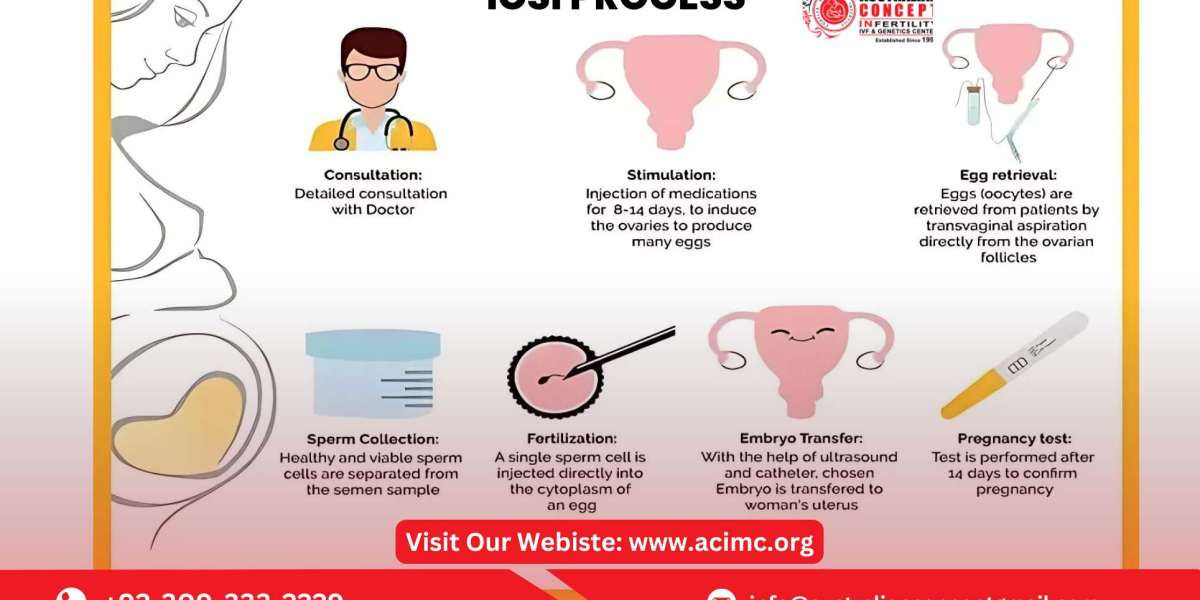Introduction
Intracytoplasmic Sperm Injection (ICSI) is one of the most advanced fertility treatments available today, specifically designed to help couples with male infertility issues. As with any medical procedure, one of the main concerns for patients is pain management. If you're undergoing an ICSI procedure, you may be wondering: Is anesthesia used during the ICSI procedure In this blog, we’ll discuss whether anesthesia is necessary, the type of sedation typically used, and how it impacts the experience of the patient.
What is ICSI?
Before diving into anesthesia, it's important to understand what the ICSI procedure entails. ICSI is a highly effective treatment where a single sperm is injected directly into an egg to aid in fertilization. It is commonly used when there are male fertility issues, such as low sperm count or poor sperm motility, preventing natural fertilization.
The procedure involves egg retrieval, sperm collection, fertilization, and embryo transfer. It’s an essential part of IVF treatment in many fertility clinics worldwide.
Is Anesthesia Used During ICSI?
The short answer is yes, some form of anesthesia or sedation is typically used during the ICSI procedure. However, it depends on the specific stages of the process. Here's how:
1. Egg Retrieval and Anesthesia
The most important part where anesthesia is used is during egg retrieval. Egg retrieval is a minor surgical procedure where the eggs are collected from the ovaries using a needle. Since the procedure can cause discomfort, it is performed under sedation or local anesthesia to ensure the woman feels no pain.
Conscious Sedation: This is the most common form of anesthesia used for egg retrieval. It allows the patient to remain awake but relaxed, with little to no awareness of the procedure.
Local Anesthesia: A local anesthetic may be injected near the ovaries to numb the area and reduce pain, though conscious sedation is usually enough for the patient to remain comfortable.
The procedure typically lasts 20-30 minutes, and patients are monitored closely during sedation. Afterward, they may feel drowsy or groggy for a few hours, but the sedation wears off quickly.
2. Sperm Collection and Anesthesia
Sperm collection, which involves the male partner providing a sperm sample, is non-invasive and doesn’t require anesthesia. This is typically done in a private room at the fertility clinic, and the sperm is then processed and selected for the ICSI procedure.
Why is Anesthesia Used in ICSI?
The use of anesthesia during the ICSI procedure, particularly during egg retrieval, is to ensure the patient's comfort. The process of retrieving eggs involves inserting a needle through the vaginal wall to reach the ovaries, which can cause significant discomfort without proper sedation.
By using anesthesia, the procedure becomes far more comfortable and less stressful for the patient, allowing the fertility specialists to retrieve the eggs without causing pain or discomfort. Anesthesia also helps to minimize any anxiety or stress during this critical stage.
How Safe is Anesthesia for the ICSI Procedure?
Anesthesia used during the ICSI procedure is very safe, and fertility clinics take every precaution to ensure the patient’s well-being. The types of sedation and anesthesia used are minimally invasive and well tolerated by most individuals. The procedure is performed by highly skilled anesthesiologists and fertility specialists who carefully monitor vital signs during the entire process.
What Should You Expect After Anesthesia?
After the egg retrieval portion of the ICSI procedure, you may feel a bit groggy or drowsy due to the sedative effect. However, most patients are able to go home the same day once the sedation wears off. It’s recommended to rest and avoid strenuous activities for the remainder of the day.
Post-procedure symptoms: Some mild cramping, bloating, or spotting is normal, but it typically resolves within a few hours.
Recovery: Full recovery usually takes one to two days, and most patients can return to work or normal activities shortly after.
Conclusion:
Yes, anesthesia is generally used during the ICSI procedure, particularly during egg retrieval, to ensure patient comfort and minimize discomfort. Sedation or local anesthesia helps make the procedure pain-free, allowing the fertility team to focus on obtaining the best-quality eggs for fertilization. If you are undergoing ICSI treatment, rest assured that your fertility clinic will guide you through every step, including anesthesia options, to ensure a smooth and comfortable experience.
For any questions about the ICSI procedure, don’t hesitate to consult with an experienced fertility specialist at a trusted fertility clinic. Your comfort, health, and success are their top priority.
For More Details: https://acimc.org/



